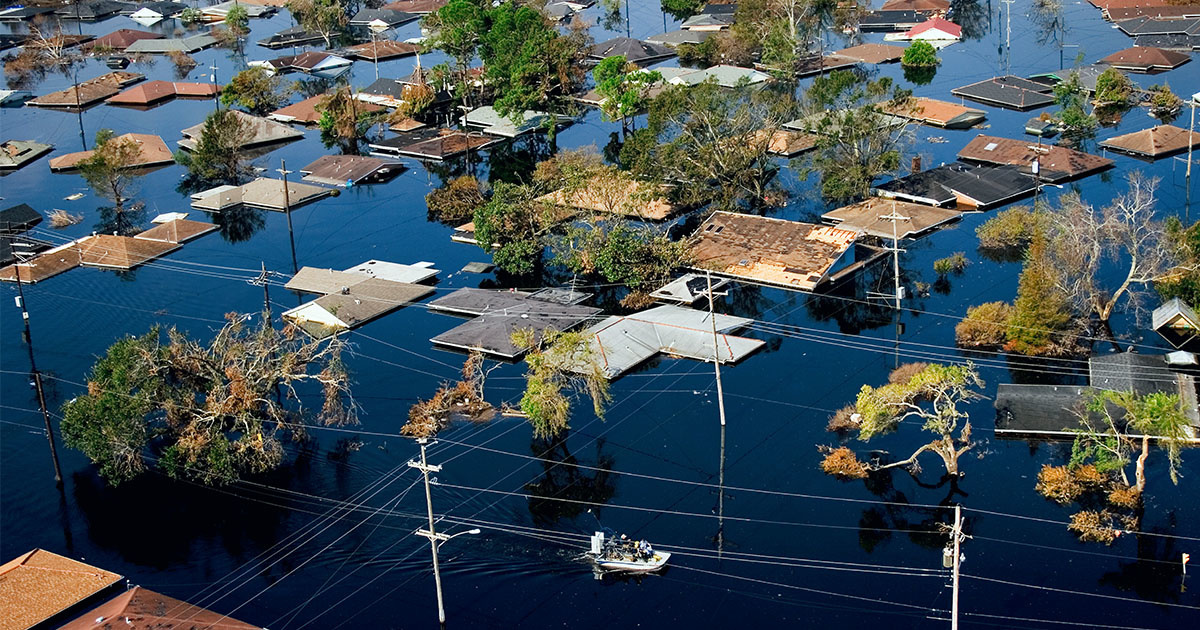

New research published in Nature Wednesday has confirmed that some of the most destructive hurricanes to pummel the U.S. in the past decade were made worse by climate change.
Hurricane Katrina, which killed more than 1,800 people in Louisiana, Hurricane Irma, which devastated the Caribbean and southeastern U.S. last year, and Hurricane Maria, which killed nearly 3,000 in Puerto Rico, were five to 10 percent wetter because of global warming, scientists at the Lawrence Berkeley National Laboratory found.
And it could get worse. Future projected warming would have made these devastating storms 15 to 35 percent wetter, according to a Berkeley Lab press release.
Climate warming could intensify rainfall in hurricanes by as much as 35%, according to new study in @Nature https://t.co/Z83vYjy9jG @eesalbnl @LBNLcs @NERSC #climatechange pic.twitter.com/T5kQm6lw3a
— Berkeley Lab (@BerkeleyLab) November 14, 2018
“This study adds exclamation points to the already clear message that we must slow global warming by conserving energy and switching from fossil to renewable fuels while preparing for more extreme weather to come,” Rutgers University hurricane scientist Jennifer Francis, who was not involved with the research, told The Guardian.
Other studies have found the footprints of climate change on individual storms. Models projected Hurricane Florence would be 50 percent wetter due to climate change, and researchers also found that the chances of Hurricane Harvey‘s record water dump were made three times more likely by the warming atmosphere, but there is not yet a scientific consensus on the degree to which the changing climate has already impacted hurricanes, according to the paper’s abstract.
“It is difficult to unravel how climate change may be influencing tropical cyclones using observations alone because records before the satellite-era are incomplete and natural variability in tropical cyclones is large,” study author Christina Patricola said in the press release.
To try and determine that influence, Patricola and her colleague Michael Wehner ran 15 tropical cyclones from the past decade through a computer modeling different climates, from a pre-industrial climate to a worst-case scenario temperature increase of three to four degrees Celsius above pre-industrial levels. Temperatures have already risen about one degree Celsius.
“For example, by modeling Hurricane Katrina in a pre-industrial climate and again under current conditions, and taking the difference between the results, researchers can determine what can be attributed to anthropogenic warming,” the press release explained.
The researchers then considered how Katrina and the other storms would have been different if the climate was even hotter, using three different warming trajectories. While the percentage of increase varied from storm to storm, the results were remarkably consistent in terms of how the storms behaved.
“The fact that almost all of the 15 tropical cyclones responded in a similar way gives confidence in the results,” Patricola said.
Climate simulations project wetter, windier hurricanes https://t.co/EdilVVqNdo pic.twitter.com/xXz7S4H6nZ
— DeepFind (@DeepFinds) November 15, 2018
In addition to their findings related to rainfall, the researchers found that future warming would increase wind speed by up to 25 knots, while most storms studied would have seen wind speeds 10 to 15 knots higher.
The hurricanes modeled for this study showed no wind speed increase due to existing warming, and the study was not designed to answer the question of whether or not storms were becoming more frequent.
Climate Change May Be Slowing Hurricanes, Leading to More Flood-Heavy Storms Like Harvey https://t.co/R6IEnFKreg #hurricanes #climatechange @NRDC @ClimateReality @SierraClub @UCSUSA @billmckibben
— EcoWatch (@EcoWatch) June 7, 2018

 233k
233k  41k
41k  Subscribe
Subscribe 